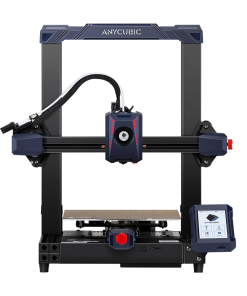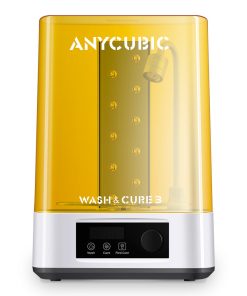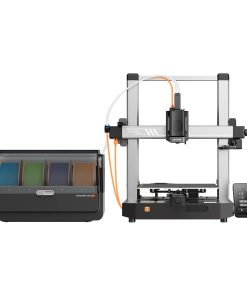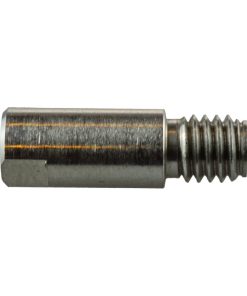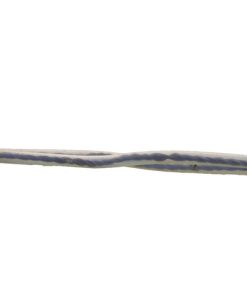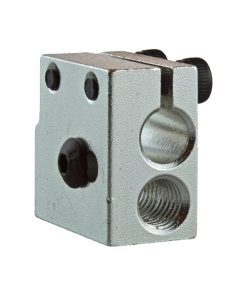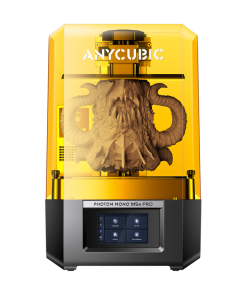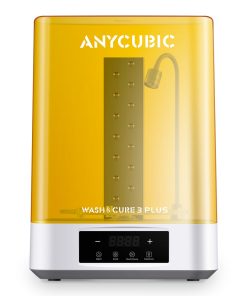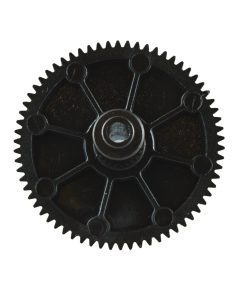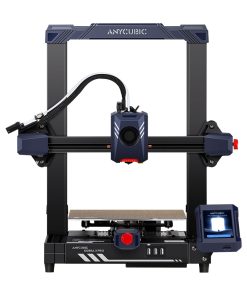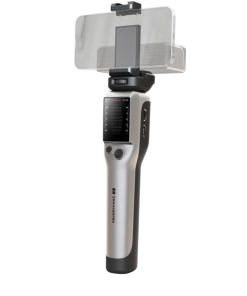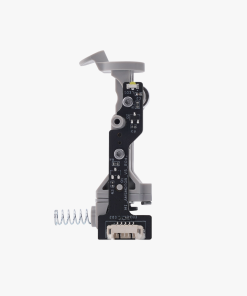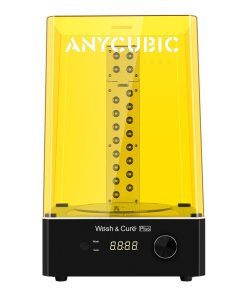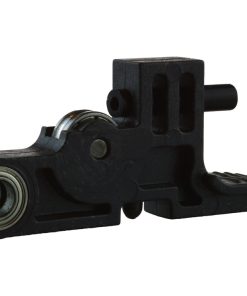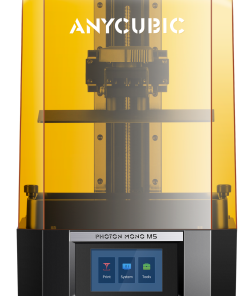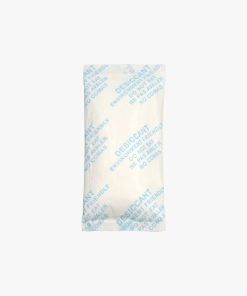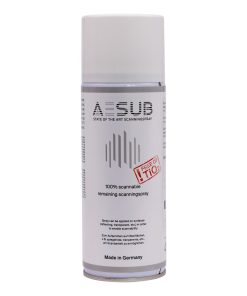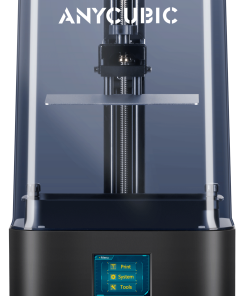Bambu Lab PAHT-CF 3D Printer Filament – Black – 1.75mm Bambu Lab
$ 48,95 $ 29,37
Bambu PAHT-CF
Bambu PAHT-CF is a composite of PA12 and carbon fiber. Inheriting the advantages of low water absorption from PA12 and high-performance carbon fiber, Bambu PAHT-CF offers excellent mechanical and thermal properties that can be maintained well even when the prints get wet. Higher Z adhesion layers and flexibility make it ideal for creating engineering parts such as functional prototypes, machining fixtures, injection molds, jigs, and low-volume production parts.
Low water absorption
With a 50% lower water absorption rate compared to normal PA-CF,
Bambu PAHT-CF maintains excellent mechanical properties and dimensional stability even when exposed to high humidity.
Deflection from Dry to Wet

Mechanical Properties Comparison
| Normal PA-CF | PAHT-CF | |
| Saturated Water Absorption Rate/% ( 25 °C, 55% RH ) | 1.89 | 0.88 |
| Bending Strength – XY/MPa (Dry) | 141 | 140 |
| Bending Strength – XY/MPa (Wet) | 76 | 115 |
| Bending Strength – Z/MPa (Dry) | 47 | 70 |
| Bending Strength – Z/MPa (Wet) | 34 | 58 |
| Bending Modulus – XY/MPa (Dry) | 4480 | 4120 |
| Bending Modulus – XY/MPa (Wet) | 2210 | 3640 |
| Bending Modulus – Z/MPa (Dry) | 1470 | 1700 |
| Bending Modulus – Z/MPa (Wet) | 770 | 1480 |
| Decline rate of mechanical properties after absorbing water/% | 40%-45% | 12%-18% |
*Both PA-CF and PAHT-CF need to be dried at 80 °C for 12 hours before printing.
Exceptional Z-bonding
Bambu PAHT-CF shows much higher adhesion in Z layers compared to normal PA-CF,
bringing it the ability to withstand high levels of impact or stress without breaking or deforming.

Z-layer Performance
| Normal PA-CF | PAHT-CF | Improved % | |
| Bending Strength – Z/MPa | 47 | 70 | 49% |
| Bending Modulus – Z/MPa | 1470 | 1700 | 16% |
| Impact Strength – Z/(kJ/m²) | 5.7 | 13.3 | 133% |
*Both PA-CF and PAHT-CF need to be dried at 80 °C for 12 hours before printing.
High tensile strength
Bambu PAHT-CF is designed to meet the demands of various industrial
and engineering applications where high strength and durability are required.

Designed for high-temperature resistance
The heat deflection temperature of Bambu PAHT-CF is up to 194℃ (0.45MPa)*, making it useful in applications where the printed parts may be exposed to high temperatures without deforming or losing their strength.
*The long-term temperature resistance is related to the structure and usage scenario of the model itself.
Reusable spool
Bambu PAHT-CF comes with a high-temperature resistant spool, which is not prone to deformation in the drying process. Continuing our concept of reducing plastic waste, the spool can also be reused with other Bambu refills.

Accessory Compatibility
| Recommended | Not Recommended | |
| Build Plate | High Temperature Plate Engineering Plate | Cool Plate |
| Hotend | Hotend with Hardened Steel Nozzle (0.6 mm, 0.4 mm, 0.8 mm)* | Hotend with Stainless Steel Nozzle (all size) Hotend with Hardened Steel Nozzle (0.2 mm) |
| Glue | Glue Stick | Liquid Glue |
*As the nozzle size increases, the probability of clogging decreases, but the print quality also decreases. Therefore, it is recommended to use a 0.6 mm Hardened Steel nozzle to avoid clogging while maintaining optimal print quality.
RFID for Intelligent Printing
All printing parameters are embedded in RFID, which can be read through our AMS (Automatic Material System).
Load and print! No more tedious setting steps.

Parameters Comparison
Learn more different filaments comparison on Bambu Filament Guide >>
| PET-CF | PAHT-CF | |
| Composition | PET, carbon fiber | PA 12 and other long-chain PA, carbon fiber |
| Hotend Compatibility | Hardened Steel 0.6 (recommended), 0.4, 0.8 mm | |
| Build Plate Compatibility | Engineering Plate, High Temperature Plate, Textured PEI Plate | |
| Glue | Glue Stick / Liquid Glue | Glue Stick |
| AMS Compatibility | NO | YES |
| Print Speed | < 100 mm/s | < 100 mm/s |
| Toughness (Impact Strength – XY) | 36.0 kJ/m² | 57.5 kJ/m² |
| Strength (Bending Strength – XY) | 149 MPa | 140 MPa |
| Stiffness (Bending Modulus – XY) | 5080 MPa | 4120 MPa |
| Layer Adhesion (Impact Strength – Z) | 4.5 kJ/m² | 13.3 kJ/m² |
| Heat Resistant(HDT, 0.45 MPa) | 205 °C | 194 °C |
| Saturated Water Absorption Rate / % (25 °C,55% RH) | 0.37 | 0.89 |
| Recommended Printing Settings | |
| Drying Settings (Blast Drying Oven) | 80 °C, 8 – 12 h |
| Printing and Keeping Container’s Humidity | < 20% RH (Sealed, with Desiccant) |
| Nozzle Temperature | 260 – 290 °C |
| Bed Temperature (with PVP Glue) | 80 – 100 °C |
| Printing Speed | < 100 mm/s |
| Physical Properties | |
| Density | 1.06 g/cm³ |
| Vicar Softening Temperature | 220 °C |
| Heat Deflection Temperature | 194 °C |
| Melting Temperature | 225 °C |
| Melt Index | 14.4 ± 2.0 g/10 min |
| Mechanical Properties | |
| Tensile Strength | 88 ± 7 MPa |
| Breaking Elongation Rate | 10.4 ± 0.7 % |
| Bending Modulus | 4120 ± 290 MPa |
| Bending Strength | 140 ± 8 MPa |
| Impact Strength | 57.5 ± 3.4 kJ/m² |
Filament with Spool*1 & Desiccant*1

Filament Label*1

Package*1
*Test Conditions
| Specimen Size | 150 mm (L) * 10 mm (W) * 2.5 mm (H) |
| Loading Weight | 1.02 KG |
| Printing Settings | All specimens were printed at a nozzle temperature of 280℃, bed temperature of 100℃, and printing speed of 100mm/s. |
| Filament States |
•Dry specimens were annealed and dried at 80°C for 12 hours before testing.
• Wet specimens were placed under the environment conditions of 25℃, 55% RH and reached the saturated water absorption rate.
|
| Weight | 0.5KG, 1KG |
|---|
Fast Delivery and professional packaging
Our long-standing relationships with UPS FedEx DHL and other international carriers lets us offer various shipping options. Our warehouse personnel are well trained and will be able to pack the goods according to the exact and precise specifications. The goods you send us are checked thoroughly and securely secured prior to shipment. Everyday we deliver thousands of packages to customers across many countries. The fact that we're committed to becoming the biggest online retailer in the World is clear. The warehouses and centers of distribution are in Europe and the USA.
It is important to note that orders with more than one item will be subject to a processing period that is based to the specific item.
Prior to shipping Our team will conduct an extensive inspection of the items you purchased. The majority of orders today are shipped in 48 hours. The delivery time is between 3-7 days.
Returns
Due to multiple entities which include the factory as well as the warehouse, we're unable to completely manage our stock. Stock levels can fluctuate at any given time. It is possible that inventory could run out once your order has been processed.
Our policy is valid for 30 days. We are unable to return or exchange your purchase when it's been 30 days since you purchased it.
The item you purchase must be in its original packaging and be unused. The item must be in its original packaging.
Related products
3D Printers
3D Printer Parts & Spares
3D Printers
3D scanners
3D Printer Parts & Spares
3D Printer Parts & Spares
3D Printer Parts & Spares
7ml Super Lube Multi-Use Synthetic Oil with Syncolon (PTFE) SuperLube
3D Printer Parts & Spares
3D scanners
3D Printer Parts & Spares
3D Printer Parts & Spares
3D Printers
3D Printer Parts & Spares
3D Printer Parts & Spares
3D Printers
3D Printer Parts & Spares
3D Printer Parts & Spares
3D scanners
3D Printer Parts & Spares
3D Printers
3D Printers
3D Printer Parts & Spares
3D Printer Parts & Spares
3D Printers
3D Printer Parts & Spares
3D Printers
3D scanners
3D scanners
3D Printers














